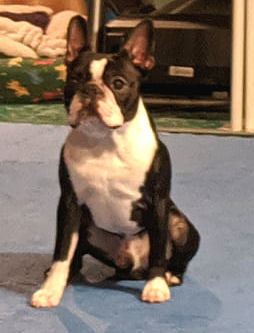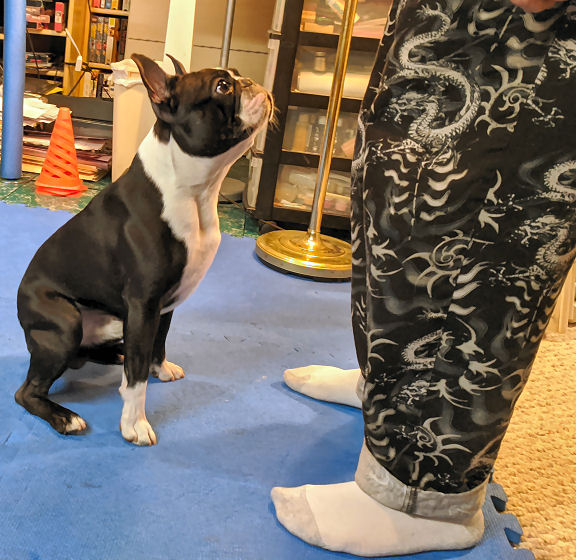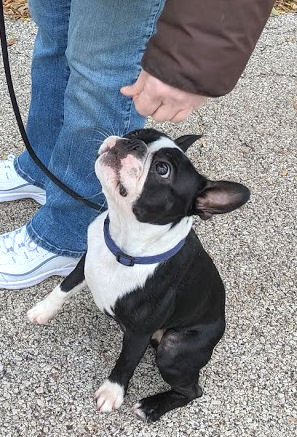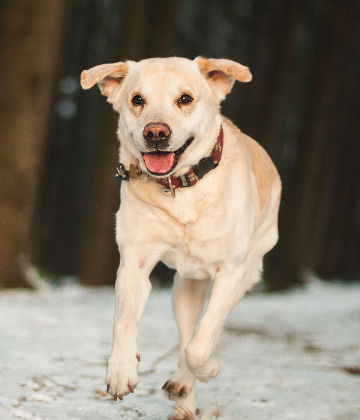The absolute best dog training advice sounds simple. Only two parts to it. And you don’t need any special tools, no particular gear. To really elevate your dog’s understanding, grow your relationship, and open up your dog’s best life, there are two things you need to do:
1: Wait
2: Shut up
We know that sounds rude. But it’s really hard to get people’s attention. And adhering to the best dog training advice isn’t easy. Just this morning, Hope was practicing some heeling with Torque and came to a stop. He sat, as he should. And then he flopped into a “Down.” He was trying to push Hope into whatever “next” would be. It didn’t work. She just looked at him and asked “What were you doing?” He stared back at her for at least 15 or 20 seconds before he got back up into a “Sit.” Hope said “Thank you!,” rewarded her dog for a good decision, and got back to her training game.
How long is a minute
We know how hard it is to just wait and say nothing. The temptation to repeat a command, or give a new one, is sometimes overwhelming. Resistance is not futile. It pays big dividends if you try it.
Think about having a two-legged teenager in the house. Mom says “Junior, please take out the trash.” Junior either ignores Mom or grunts some kind of acknowledgement. 15 minutes later, Mom repeats herself. And Junior grunts and/or waves again. After another 10 minutes, Mom’s lost her cool, and says decisively, “JUNIOR TIBERIUS TEENAGER – TAKE OUT THE TRASH!” And Junior finally does it.

If you keep repeating the same thing to your dog in the same way, that’s the pattern you’re training your dog to know. Say it once, clearly. Then shut up and give your dog time to think. For as long as it takes, if they’re still with you. If they’re not disengaging, they’re thinking, processing, and coming to a decision. It may seem like the time between word and action is forever – you could have said “Sit!” hundreds of times while you were waiting. That’s the point. You don’t want to have to say it a hundred times.
Trust us. We’re pretty certain your dog heard you the first time. Now they’re trying to figure out if you meant it, and what they’ll do about it.
Easier isn’t better
We know it’s easier to just say it again. Just don’t. Don’t deprive your dog of the opportunity to make a good decision. Believe in your dog. We’ve said it before: Wait for your dog!
The only way you can really find out if your dog knows something is to trust them to do it. You don’t know if your dog knows “Down!” unless you can say it once, from across the room, and your dog does it. We practice heeling quite a bit in our dog training classes. Randomly, we’ll call out “Down your dogs!” to our students. It’s really kind of impressive to watch a classful of dogs suddenly drop.
They don’t all start out that way. We’ve said “just wait” more times than we want to think about. And when people wait, their dog puzzles it out and does the right thing. Sometimes you can almost see the hamster-wheels in their brain spinning while they think. Some dogs will look around, see what the other dogs are doing, and copy. But given the chance to choose, dogs almost always choose wisely.
What if they don’t get it right?
By testing your dog’s knowledge of any skill, you gain valuable information for future training games. If they’re acing it, it’s time to move on. You can tuck that behavior into the drawer and air it out once in a while, just to keep it fresh. Now you have time to play a different game.
Nobody likes doing the same task over and over, without end. Not people. And not dogs, either. You can have a particular time and place that you play training games. If you do, your dog will learn the schedule and probably dash off to your special training area when it’s time. You’ll both have more fun if you play different training games, rather than just drilling something you’re “working” on. We want our dogs to be letter-perfect in the very specific exercises for competition obedience. That doesn’t mean we’re always hammering away at them. It means we treat them like all the other, silly, fun training games. Playing those maybe once a week. Maybe not. But always keeping it new, fresh, and fun for us and our dogs.



